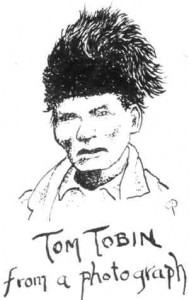Review by Smith Maddrey
Biography – November 2008 – Colorado Central Magazine
Wallace Stegner and the American West
by Philip L. Fradkin
Published in 2008 by Alfred A. Knopf
ISBN: 978-1-4000-4391-0
LIKE WANDERERS returning to their old hometown after a long time away, readers of Philip Fradkin’s new biography of Wallace Stegner will recognize familiar terrain and make fresh discoveries.
Wallace Stegner and the American West arrives 15 years after Stegner’s death and joins the growing body of criticism and biographies about one of the West’s best-known writers. While Fradkin’s respect for Stegner (they met only once, but corresponded and reviewed each others’ books) seeps into every paragraph, the author breaks new ground through his frank portrayal of “the whole man.” Previous profiles of Stegner threw light on his literary work and apotheosis as a writer. Fradkin is more interested in “the fact that he was human, meaning that, like the rest of us, he was flawed.” He writes: “This is a book about a man and the physical landscapes he inhabited and how they influenced him…. It is also the story of a quintessential westerner who could not deal with the wrenching changes that are a constant of the American West.”
Fradkin, a Pulitzer Prize-winning environmental journalist, has authored ten previous books about the Interior West, Alaska and California. His angle of research begins geographically, in Salt Lake City, Utah, and in Greensboro, Vt., where he searches for traces of the Stegner family. From there, Fradkin follows the “Stegner Trail” to California, Saskatchewan, Iowa and Washington.
Relentless research and a chronological narrative give way to a balanced biography rich in anecdote. Fradkin connects Stegner’s varied roles through sections titled “Talented Teacher,” “Reluctant Conservationist,” and “Prominent Author.” The story reads like a journey: Fradkin uses the metaphor of an 84-inch-long rope, with each inch representing one of Stegner’s years.
In a chapter called “The Stanford Years,” Stegner lands a position designing one of the country’s first and most vigorous creative writing programs. Stegner raises money, stimulates young writers’ minds, struggles with administration, and clashes with his “uneducable” student, Ken Kesey. The reader gains insight into Stegner’s indefatigable work ethic, as well as some of his curmudgeonly ways.
Fradkin devotes 50 pages to exploring the accusations of “plagiarism” that still cast a shadow over Stegner’s novel Angle of Repose. He finds its roots in Stegner’s “search for a usable past.” As Fradkin explains, “Stegner took the basic outline of the lives of Arthur and Mary Hallock Foote and bent it to fit his fictional needs.” He obtained “blanket approval” to use Foote’s letters and claimed that it would involve “no recognizable characterizations and no quotations direct from the letters.”
However, Angle of Repose, which earned the Pulitzer Prize in 1971, featured Foote family names, suggested adultery, and directly cited some of Foote’s letters. The Foote family and literary critics claimed that Stegner had warped the facts and tarnished Mary Hallock Foote’s reputation. In the end, Fradkin can only hold all parties accountable for operating in a “zone of vagueness.”
Fradkin, like Stegner, rejects “mythic” portrayals, preferring realism. Hence, we learn about Stegner’s flaws, his heavy drinking, and tendency to hold grudges. Stegner attacks David Brower in an editorial, shows ill will towards the New York Times’ editors (who ignored his work), and maintains a cold silence towards Ken Kesey (who claimed that Stegner’s written work declined in quality once he started teaching).
However, the book leaves readers guessing about fundamental aspects of Stegner’s life. One can’t help but wonder how Stegner, who grew up in a family rife with conflict and loss (and centered his novels on family relationships, especially father-son ties), fared as husband and father. Fradkin offers only glimpses into Stegner’s relationship with Mary, his wife of 58 years, and Page, his only son, with whom he co-wrote one book.
Near the end of his Stegner odyssey, Fradkin visits the site in northeast Vermont where the author’s ashes were scattered. Stegner escaped to Vermont to write and to experience a “stable community” he’d found nowhere else. Choosing Vermont as his resting place meant, according to Fradkin, “a return to his beginnings. What he found in Vermont, as he had in Eastend (Saskatchewan), was a convergence of nature and human history.”
In 1992, the year before his death, Stegner’s view of the Interior West — the place he’d once described as the “native home of hope” — took on a desperate and grief-filled hue. Painfully aware of the threats facing the region’s public lands, he could only conclude: “All I can think of is acceptance, acknowledgment, and restraint — acceptance of the limitations of the country, acknowledgment of the incompatibility of solitude and resort activities, and restraint of our devouring greed.”
This review originally appeared in the Oct. 13, 2008 issue of High Country News.

